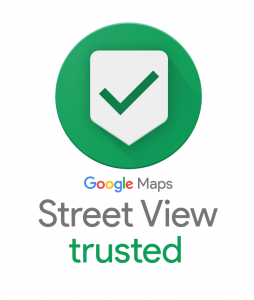If you’re an entrepreneur, marketing is an important part of your overall business strategy. Through marketing, you’re able to attract new customers, expand your operations, and make more money. That said, many small- to medium-sized enterprises don’t have the budget for an in-house marketing team. Don’t stress. Modern technology makes it easier than ever to become your own marketing department. This guide explains how it’s done.
Identify your marketing goals
Before you start coming up with marketing ideas, it’s essential to figure out what you hope to accomplish through your marketing. This will help you figure out the right strategy to reach those goals. Possible objectives might include expanding your customer base, furthering your geographical reach, or simply increasing profits by selling more products or services. The precise goals depend on your business’s unique needs.
Create a profile of your ideal customer
Once you have an idea of your marketing goals, it’s time to identify your target audience. This is your ideal customer. To figure out who that person is, you want to get into details like their spending habits, income, marital status, age bracket, and gender. One easy way to do this is to look at the people who currently champion your business. Identifying commonalities across this group will allow you to paint a picture of who you’re catering to.
Identify your unique selling proposition
Realistically, you aren’t the only person in your industry. Other companies probably offer similar goods or services. With your marketing, you want to convince consumers to choose your company instead of theirs. To accomplish this, you have to define your USP, unique selling proposition. BetaKit provides key questions you can ask yourself to identify your USP, like what skills your employees have and whether you hold any intellectual property rights.
Start crafting marketing messages
Once you’ve identified your target audience and your USP, you have enough information to start writing marketing messages. These will inform the text and visuals you use in marketing materials. For a marketing message to succeed, it should be tailored to your target customer’s persona. For example, if you’re targeting young people, casual language may be appropriate, but if you’re targeting senior professionals, a more formal tone is appropriate.
Pick the marketing channels you want to use
Thanks to modern technology, there are many marketing channels available to choose from. Your channel is how you convey your given marketing messages. Here are examples, including social media, email marketing, and postcard mailings. You will likely want to diversify your marketing across multiple channels. However, don’t spread yourself too thin and always keep your target audience’s habits in mind. What channels do they use?
Set a concrete budget
Before you go any further, it’s helpful to set a marketing budget. This will help prevent overspending. Keep in mind that some marketing channels are more affordable than others. For example, social media is free. However, you can also spend on paid social media ads if you want to increase your reach. It’s usually best to start small, try your marketing efforts out, see how they work, and then decide if you want to scale up.
Put together a master marketing plan
With the above details finalized, it’s time to solidify your marketing strategy in a written plan. HubSpot offers free templates you can use to get your marketing plan down in black-and-white. Key components include a business summary, business initiatives, customer analysis, competitor analysis, market strategy, marketing channels, and financial projections. As you can see, you’ve already done a lot of the work above.
Start crafting your marketing deliverables
Now it’s time for the fun part—crafting your actual marketing materials. The deliverables you need to create will vary according to details like marketing channels. For example, if you’ve decided to use social media, you need to create social media posts. If you’ve opted for email marketing, you need to write emails. When creating deliverables, ensure they convey your messages clearly and align with your target audience’s expectations.
Determine key performance indicators
Marketing costs money. You want to make sure that money is well spent. Towards this end, it’s important to establish key performance indicators, KPIs, for any marketing efforts you undertake. These are measurable points that reveal how well your marketing is doing. Examples include cost per lead, customer retention, cost per customer acquisition, cost per qualified lead, and—of course—sales revenue.
Measure your marketing success regularly
Once you’ve established your KPIs, make sure to put them to good use! You should be measuring your marketing results regularly. A good rule of thumb is to create quarterly marketing plans and check back in at the end of every quarter, at a bare minimum. You can also measure your marketing success by seeing if you’ve achieved the initial objectives you outlined for your marketing. Towards this end, make sure your goals are SMART.
Be open to making changes to your marketing plan
Not every marketing initiative is a winner—and that’s okay. Prepare for some ups and downs as you start your marketing journey. The important thing is to set objectives, measure results, and pivot as needed. If you aren’t meeting your goals, try to figure out why. Alternatively, if you’re exceeding your goals, pinpoint the reason. What’s working in your marketing and how can you further leverage that success? Honest feedback is critical.
Get help when necessary
While you don’t have to staff an in-house marketing team to achieve business success, sometimes having an external perspective can be useful. This is especially true if you aren’t a marketing professional yourself. For example, if you want to delve into digital marketing but have no clue where to start, a full-service agency like Portland Digital Marketing can help. They cover everything from content writing to web development.
Marketing is essential to your business’ success. The good news is that there are more user-friendly marketing tools available to entrepreneurs than ever before. With a little effort, you can become your very own marketing team. The above tips can help.
For more resources to help you achieve your marketing goals, check out the Portland Digital Marketing blog.







